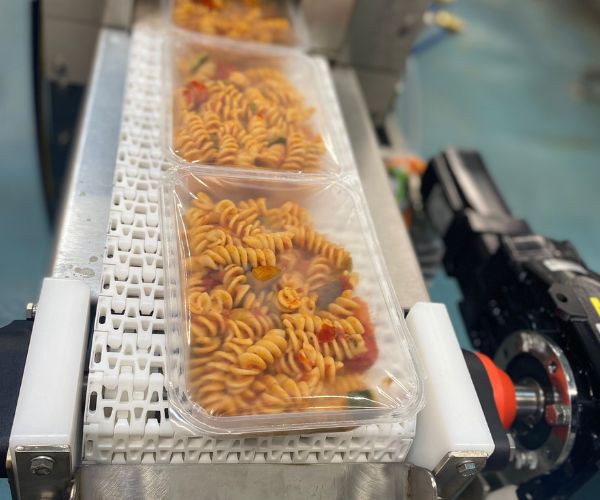Packaging
How can you control the permeability and defects of your packaging?
05
June

Published on: 05/06/2024
Since the industrial era, the packaging market has been one of rapid growth and development. Over the past 50 years, the types of packaging have multiplied and diversified, making it possible to increase the shelf life of food products and optimize their transport. But packaging has also been identified as a source of pollution, and sometimes as a vector for substances hazardous to health. Faced with this situation, French and European regulations are evolving to transform a linear economy into a circular one, in order to promote sustainability and waste reduction (see). As a result, companies are having to make rapid changes to their packaging in order to increase recycling and reuse.
Change of packaging means change management! In addition to their main function of containing a product, packaging also fulfils other essential functions: preserving food quality, preventing microbiological risk, preventing chemical risk, meeting the manufacturer's technical requirements, interacting with the consumer, etc... Packaging is designed according to the product it contains, just as a product is formulated/developed according to the choice of packaging process and the packaging's shelf-life performance: this is known as "packaging design".packaging/product pairing" .
How can you control the permeability of your packaging?
- For example, the function of preserving food quality often involves control of product oxidationdue to the presence of oxygen in its immediate environment. Preventing the penetration of oxygen through packaging helps to limit food oxidation. We talk about controlling packaging permeability and oxygen transfer coefficients.
- Another example: in the case of intentionally dehydrated or formulated to reduce water activitythe packaging must prevent moisture from penetrating through it. Here again, we're talking about controlling the permeability of packaging , but this time in terms of water vapor transfer coefficients.
Unlike metal and glass, which are ideal barriers, plastic materials have highly variable barrier properties and are not necessarily barriers to both oxygen and water, which explains the frequent use of multi-layer materials. The latter combine polymers traditionally used in the food industry (PP, PE, PS, PET, etc.) with gas-barrier compounds (EVOH, aluminum, SiOX, AlOx). Unfortunately, the combination of these materials often results in non-recyclable materials. In line with the aforementioned 3R decree, non-recyclable multi-layer packaging will have to be replaced by 2025 by a recyclable solution that is adapted to the product it contains.
The barrier functions of new packaging: a point of vigilance not to be overlooked
The barrier functions of new packaging materials are a point of particular concern for future IAA users. Packaging material suppliers generally include transfer coefficient values for standardized temperature and humidity conditions in their technical data sheets. These standardized conditions often have little to do with the conditions under which food is produced, transported, stored and used. Transfer coefficients must be analyzed in the laboratory under real-life conditions: on the finished packaging, which has undergone all the physical stresses applied to the system, and under operating conditions representative of future conditions of use, simulated using permeation modules.
How can I ensure that my packaging is watertight?
If food quality is to be preserved, the permeability of the packaging must be controlled, it is essential that this desired permeability be guaranteed over time, i.e. throughout the entire life of the food product.. A complementary concept to permeability is the notion ofpackaging tightness. Indeed, imperfect sealing or the presence of micro-cracks appearing during the technological itinerary of the packaging and the packaged product can cause the total or partial loss of the packaging's barrier function. Mastering the sealing process is a particular challenge with paper/plastic hybrid flexible materials. Incorrect determination of sealing parameters (time, temperature, pressure) can lead to sealing defects. An eco-design action in line with the 3R Decree's "Reduction" axis for plastic packaging (reduction in thickness, change of material, etc.), will require particular vigilance to avoid these problems.. The tightness of a package can be analyzed in the laboratory by testing for leaks and micro-leaks, using a range of protocols adapted to the materials used and the order of magnitude of the suspected leaks.
Controlling the permeability and defects of your packaging: the CTCPA can help.
Any initial choice of packaging, or any evolution of existing packaging, requires the marketer to ensure that the new packaging solution meets permeability and leak-tightness requirements. The adoption of new production and consumption habits, to the benefit of improved environmental impact, should enable your company to maintain satisfactory levels of quality and productivity. Visit CTCPAwith its expertise in the fields of packagingthe industrial environmental performance but also in the field of development of food products and processesWe'll help you find and choose the right justes-emballages.
Contact : CTCPA packaging analysis laboratory (analyse-emballage.com)
_
Article written by Amélie DUCROS - Packaging Project Manager
Related article: Adapting packaging to environmental requirements (ctcpa.org)







